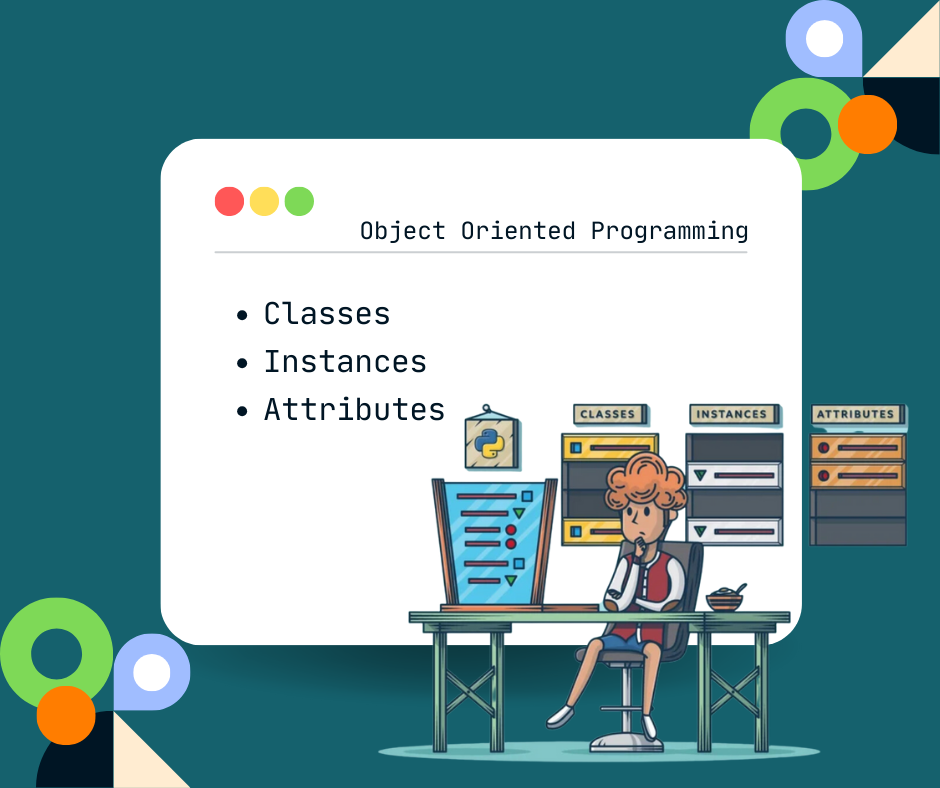What is Object-Oriented Programming (OOP)?
Object-Oriented Programming, or OOP, is a programming paradigm that revolves around the concept of objects. In OOP, objects are instances of classes, and these objects encapsulate data and behavior. This approach makes it easier to model real-world entities and their interactions in your code.
The Foundation: Classes and Objects:
In the world of Python, everything revolves around classes and objects. Classes serve as blueprints for creating objects and defining their structure and behavior. Objects, on the other hand, are instances of these classes, possessing their unique characteristics.
Adding Life to Objects: Attributes and Methods:
Attributes are the data members of a class, while methods are functions associated with those classes. They give objects their properties and functionality, making them dynamic and interactive.
Building on Inheritance:
Inheritance is a fundamental concept in OOP. It allows you to create a new class based on an existing one, inheriting its attributes and methods. This promotes code reusability and hierarchical organization.
Safeguarding Data with Encapsulation:
Encapsulation is all about protecting the integrity of your data. By encapsulating data within classes and controlling access through methods, you can prevent unauthorized modifications and ensure data consistency.
Abstracting Complex Concepts:
Abstraction simplifies complex systems by hiding unnecessary details. It allows you to create high-level models of objects and their interactions, making your code more manageable.
Achieving Flexibility with Polymorphism:
Polymorphism enables objects of different classes to be treated as objects of a common superclass. This flexibility simplifies code and promotes extensibility.
Mastering OOP in Python:
Python provides a rich set of features for OOP, making it an ideal choice for OOP beginners. We’ll explore Python-specific concepts and syntax throughout this tutorial.
Practical Applications:
Understanding OOP is crucial because it is widely used in various domains, including software development, game design, and data analysis.

Case Study: Building a Simple Game
To put our OOP knowledge into practice, we’ll walk through the creation of a simple game. This hands-on example will demonstrate how OOP concepts can be applied to real-world scenarios.
OOP Best Practices:
We’ll delve into best practices for writing clean and maintainable OOP code. These tips will help you become a more proficient Python programmer.
Common Pitfalls to Avoid:
While OOP offers numerous advantages, it also comes with pitfalls. We’ll highlight some common mistakes and how to steer clear of them.
Resources for Further Learning:
To continue your journey in OOP, we’ve curated a list of resources, including books, online courses, and communities, where you can expand your knowledge.
Conclusion:
In this comprehensive guide, we’ve explored the fundamentals of Object-Oriented Programming in Python. From classes and objects to inheritance, encapsulation, abstraction, and polymorphism, you now have a solid foundation to build upon.
